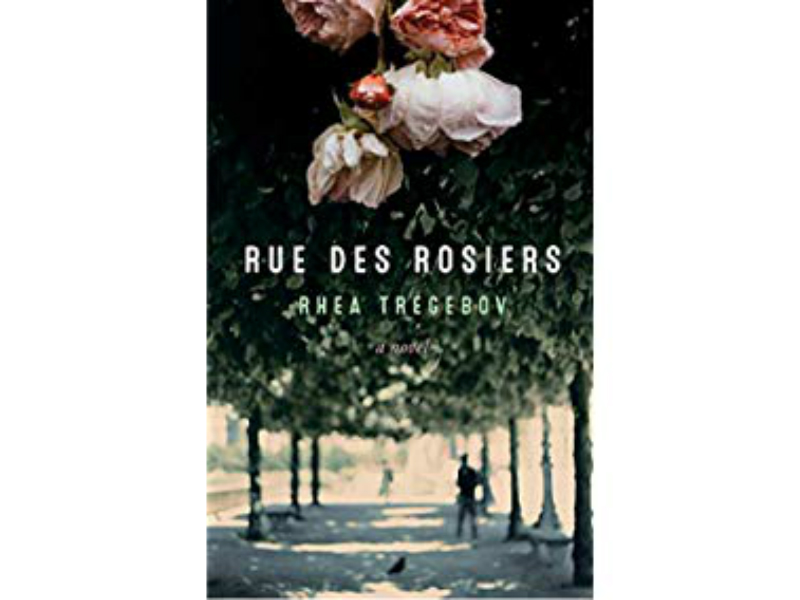Jo Goldenberg was a deli restaurant in Le Marais, Paris’ iconic Jewish neighbourhood.
On Aug. 9, 1982, three terrorists, members of the PLO’s Abu Nidal faction, attacked it. They killed six people and wounded 22 others. The atrocity was described at the time as the heaviest toll suffered by Jews in France since the Second World War. The restaurant closed in 2006.
This horrific incident was in the news again recently. The French daily newspaper Le Parisien reported that shortly after the attack, the head of France’s domestic intelligence service, Yves Bonnet, confessed to having made a secret pact with Abu Nidal which granted the terrorist organization free movement in France in exchange for a promise that they would commit no further attacks on French soil. The three perpetrators of the Jo Goldenberg attack have never been brought to justice.
READ: BOOK LINKS PREWAR POLISH TOWN WITH MODERN VANCOUVER
During the summer of 1982, Rhea Tregebov, the Canadian poet/author, was living in Paris, her home a mere five minutes from the restaurant. Tregebov told a Toronto interviewer that the shattered glass, smoke, cinders, fire and death of the attack were seared into her memory. Ultimately, some 40 years later, this recollection formed the climactic tipping point for the novel that would become Rue des Rosiers.
The slaughter at Jo Goldenberg is the deeply transformative intervention in the life of the story’s key protagonist, Sarah Levine. Sarah is youngest of three sisters and, in her mind, the least accomplished of the trio, always “kind of at a loss.” She is a troubled soul, beset by recurring nightmares and overwhelmed by a severe deficit in self-esteem. We meet her in 1982, when she is 25 years old, living in Toronto working at a garden centre. Though it is a dead-end job, she nevertheless enjoys the labour and the esthetics of outdoor landscaping.
The novel has a Canadian context. Sarah was born in Winnipeg, where her parents and older married sister, Rose, still live. Her other sister, Gail, is a constantly churning, hard-working lawyer in Toronto. The sisters are close but their connection is complicated by the unique burdens that each struggles to bear. Their relationship is the incubator of Sarah’s reticent nature. Tregebov deftly portrays the rough edges of the sisters’ occasionally clumsy attempts at closeness. She masterfully depicts episodes of emotional explosion as well as tender reconciliation. Rose is incapable of extending a helping hand to Sarah. Gail appears not to want to.
When Sarah loses her job, she travels to Paris with her boyfriend. The city – its remarkable street architecture and carefully designed, ubiquitous greenery – becomes a laboratory in which Sarah recreates herself anew. She meets an array of individuals, each effectively an untouched canvas on which Sarah learns to express herself in fresh, more assertive ways. The defining moment for Sarah in Paris, alas, is the incident at Jo Goldenberg. It is the melancholy of her fate to be at the restaurant when the terrorists opened fire.
Tregebov then creates a parallel protagonist – Laila – who tells her story to the reader through first person reflections. Like a mist wafting in and out of the story, Laila “speaks” lyrically in cryptic dreamlike prose. Tregebov differentiates the scenes involving Laila stylistically from the rest of the novel. Even the font in these few chapters is different.
Laila is a Palestinian who yearns to return to the homeland her parents endlessly described. After her brother’s friend abuses her badly, she too finds her way to Paris where she is then neglected, exploited and betrayed by her boyfriend.
Tregebov explained that, in creating the character of Laila, she was attempting to “understand the humanity inside the inhumanity”. But the attempt fails. It is only Laila’s suffering we hear, as if her misery and misfortune were an explanation, let alone justification, for wanton murder as the politics of protest.
But Tregebov also implies that there cannot be any rationale for the acts of terror. Laila’s concluding words are addressed to Sarah. They are ominous, perverse and poisoned.
“This is my story, Sarah. So far. The Jews took my country. I live in a new one. And even if you think this is your story, it’s mine too. If the war between us ends, maybe we’ll both read our stories backwards, the right way, from right to left.”
Sarah is a Canadian Jew living in Paris. Laila is a Palestinian living in Paris. There is no actual war between these young women. And yet in Laila’s mind, she is at war with Sarah because Sarah is a Jew.
Rue des Rosiers is at its best when it depicts the many street-side enchantments of Paris. For example Tregebov writes about the cornucopia of products on Rue Saint-Antoine. “They pass pâtisseries, hardware stores, fabric stores, their windows crammed with goods. Fruit and vegetable shops with elaborate displays: intricate pyramidal mountains of cherries, carefully heaped, orderly piles of white asparagus-like stacks of logs.”
Tregebov also excels in describing French society’s ambiguous relationship to the Jewish community. In one memorable scene, Sarah must contend with a polite Parisienne bigot, Marie-Claire. Speaking about the roundup and deportation of Jews in July 1942 at Paris’ Vélodrome d’Hiver, one of Sarah’s friends tells Marie-Claire: “This is in fact an established event during the war; no one questions that it happened. Though you don’t hear much about it in polite circles.”
She looks at Marie-Claire. “Jewish civilians were arrested en masse. During the Occupation. 1942, I’m pretty sure.”
“I don’t believe they were French,” Marie-Claire says. “They were foreign nationals.”
